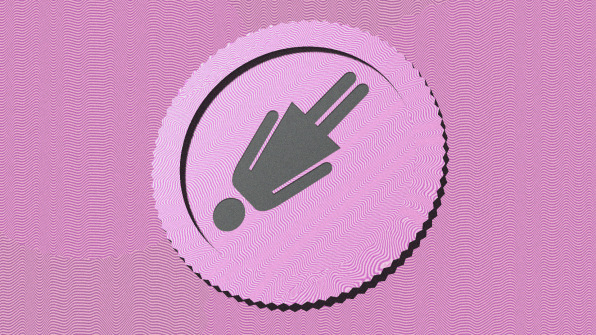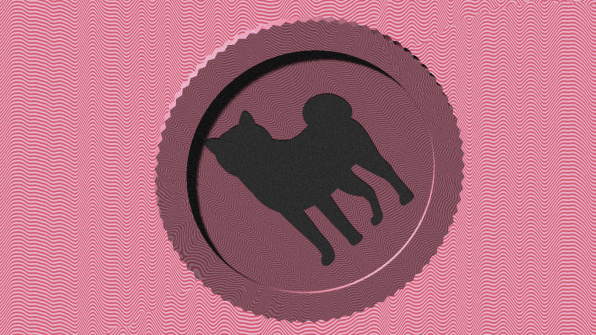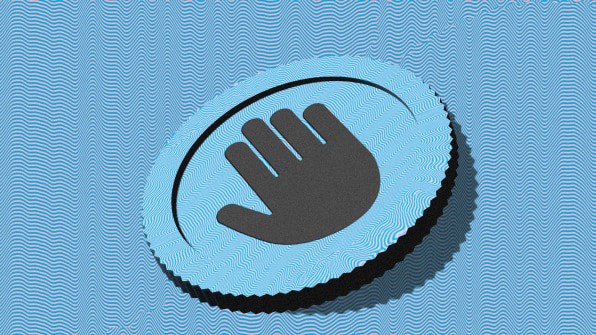The creators of many new currencies are shrewdly marketing their coins by tying them to everything from weed and porn to Donald Trump.
Everyone’s heard of bitcoin, sure. But the ballooning cryptocurrency has over 1,000 competitors. There’s a coin for pot smokers called Kushcoin. A coin for betting on Fantasy Sports called No Limit Coin. A coin aimed at women called, yes, Women Coin. A coin promising to make America great again named TrumpCoin. And many, many coins for purchasing pornography, like Titcoin and Spankchain. There are ironic coins for people who are too cool to take cryptocurrency seriously, like Dogecoin or the now defunct Coinye (a completely and utterly unendorsed Kanye West coin). Heck, there’s even a coin called PonziCoin that essentially admits its coins are a scam–but buy them anyway!
Often dubbed altcoins, these competitors range from copy and pasted Bitcoin code to truly innovative, secure software platforms that might birth not just another way to buy groceries, but a whole new internet. Many believe cryptocurrencies will soon be a trillion-dollar industry, driven by speculative investments, futures traders, and so many server farms mining new coins and enabling transactions that they’re actually accelerating global warming.

At least some of their success must be attributed to the ethos that cryptocurrencies embody. For many, they represent a utopian second economy, where money is managed by people rather than banks. It seems like an egalitarian reboot of the global economy, a system that, not long ago, our tax dollars bailed out–and which has only come back more powerful and greedy than ever. But these altcoins are also a story of brilliant grassroots branding, through which the right website and a bit of witty clipart can rally redditors and create market caps in the tens of millions out of nothing but electricity.Most of these currencies will wither away as the market matures. Yet after talking to half a dozen people in every position across the industry, one thing is clear: Cryptocurrencies, through their names, websites, logos, and brands, resonate with people in ways far beyond getting rich quick. In a world where most of us feel helpless amidst big corporations and an indifferent government, we may define ourselves by the type of money we spend–and the special culture that our chosen coin represents (in that sense, altcoins may be less an escape from capitalism than its zenith). Today, identity defines not just what we buy, but the currency we use to buy it.

THE MEGA-BUSINESS OF CRYTOCURRENCIES
In 2017, the story of cryptocurrencies was actually much larger than any one coin. It was bigger than Bitcoin, which ballooned from $1,000 per coin to around $14,000 by end of year; or Ethereum, which grew over 9,000%; or even Ripple, which bested every competitor with insane 36,000% growth.
A whole new industry found itself flush with nearly unlimited investment. According to Coindesk, 300 different cryptocurrencies raised a total of just over $4 billion in ICOs–also known as “initial coin offerings”–selling their coins to new investors, a technique that outpaced venture capital in the space by significant margins. This digital gold rush was perfectly articulated by two old guard companies, Long Island Iced Tea and the parent company of Hooters, which each saw unusual market gains after promising to invest in white hot blockchain tech. The financial appeal of getting in early on these new cryptocurrencies is clear, though many–even most–might have no shot at gaining a real foothold in the market. Why settle for getting 5% or 10% back over a year on a stock, when you might get 3000% back in a year on a new coin?
But how do you know which altcoin to buy into? For many, the name is the first step.
“My view is, with many sets of coins, people are just trying to get attention. Much the same thing happens with apps in the App Store,” says Daniel Romero, general manager of Coinbase, the U.S.’s largest, and likely most legitimate, coin-buying platform. Coinbase only allows the purchase and trade of four different cryptocurrencies, though thousands exist. “I think it’s the same thing with cryptocurrencies,” he continues. “And having seen a world where Bitcoin exists, and Ethereum exists, you have other digital currencies that have large market capitalizations, and branding around them, I think that’s created a bit of a trend where a lot of other people jump on board.”
I decided to ask a branding guru–Randall Stone, who has led the identities of mega-corporations like Starbucks and Samsung–for an outside opinion of some of the quirkier coins. “They’re almost like bad, trendy startup kind of names. ‘No Limit Coin.’ ‘Zcash.’ A whole bunch of them,” he says, amused. “Some of the branding is just so juvenile and primitive, while others are really sophisticated. And some, you can tell the tech background of the designer because they look a little B2B-esque.”
At the same time, “a lot of them felt like fly by night, here today, gone tomorrow. No real sense of legitimacy,” he says. Take Cagecoin, a coin branded around Nicholas Cage. On one hand, it appeals to certain corners of the internet. On the other, it undermines the legitimacy of cryptocurrency. “The same problem exists for Bitcoin, as it goes from this weird anomaly in the marketplace and becomes more mainstream, this sense of reassurance that this is legitimate needs to be better expressed,” Stone adds.

Stone was impressed by Women Coin, “the world’s first digital currency for women.” And in a world in which men dominate finance, why not? “It felt the most purposeful platform for women to trade,” says Stone. Then I pointed out that I’d thought the same thing, until I dug into the site a bit. Something about it seemed off to me. Was it the sexy lady boxer? Maybe. Or was it the shot of a business woman walking on a tarmac…from a somewhat low angle…that accentuated her legs? To me, there’s no way that Women Coin is made, or branded, by women (though I reached out to the currency to ask). When I point out my observation to Stone, he laughs, knowing he’d momentarily been had by the name. “I can see the Maximconnotation!”“It does look like, eventually, these altcoin sites, these could be part of your cyber identity. What coins do you pay with? It’s going to be an expression, whether it’s an overt expression, or an anonymous expression, of who you are,” says Stone. “There’s going to be a branding war. Who is going to own the customer? Are you going to be an Android or Apple person?”

BUT WHO ACTUALLY BUYS ALTCOINS?
“I’m curious, who are the people who are buying those coins?” Romero muses as I talk about the popularity of altcoins built upon memes. “Because they’re not on Coinbase.”
It’s a valid question. Trading of altcoins takes place on exchanges that look straight out of 1992 internet technologies. So I reached out to one such person to find out. On the message boards, some call him “___TR___.” Others, simply the BUN guy. ___TR___ and his friends played poker on Poker Shibes, a gaming website where you bet on games with Dogecoin, an irony-tinged altcoin featuring the visage of the famed Shiba Inu meme. With a market cap now exceeding $1 billion, Dogecoin can actually be valuable in aggregate, so the group was looking for a fun alternative for meaningless side bets during games. They came across Bunnycoin, or BUN, a coin named after bunnies.
“I’m not really sure of the origin and why they called it Bunnycoin other than the original dev was a Rabbit fan,” ___TR___ tells me via email. Created in 2014 by the independent software studio Milo Solutions, it was quickly abandoned by its developer. But ___TR___ and others took it over unofficially, and began mining millions of coins. With a market cap of just a few thousand dollars, diluted across countless coins, “we promoted BUN as a fun coin that was cheap and you could give someone millions of for next to no cost,” says ___TR___. It was the internet equivalent to Monopoly money.

Bunnycoin was listed on a few coin exchanges, which generally helps woo investors, but it never caught on. Eventually ___TR___’s friends lost interest. By 2016, ___TR___ was the only one left mining for bunnies. Yet in the early months of 2017, Bunnycoin would mysteriously balloon to over a million dollars in value almost overnight (___TR___ thinks the fact that its Twitter account followed several serious cryptocurrency traders may have had something to do with it). Someone on Bunnycoin’s original dev team reappeared and took control of the coin, liquidating proceeds that were earmarked for charity. “They created a really poor website, and claimed to sponsor some kids at a Mexican orphanage. I know nothing about this, and do not know if it is legit or not,” says ___TR___, who was able to walk away during this time, too, pocketing a considerable undisclosed profit.The story of Bunnycoin doesn’t seem to be rare in the world of altcoins. The simplest of altcoins can be coded now in less than a day, simply by copying the best bits of Bitcoin’s open source code. And while the 10 or so most valuable Bitcoin alternatives today are far more ambitious than that–backed with startup-level funding, and promising technology that operates faster, more anonymously, or with more progammability than Bitcoin–altcoins just need the support of a single, zealous reddit thread to make their way onto the smaller coin exchanges. Or at least they did, in 2014, when many of them came to be.
If one altcoin is really only as valid as another, the weight of adoption–to get people mining, and trading, and even cash-buying it–requires the same strategy that Procter & Gamble uses to sell you one of many indistinguishably different dish detergents. It can come down to a funny name, or slogan, or look. Bunnycoin caught the attention of the internet poker players because it was cheap, cute, and innocuous. However taped together a lot of these coins and their respective websites may be, their creators seem good at finding a niche.

CHOOSE YOUR COIN, CHOOSE YOUR IDENTITY
It comes back to Stone’s observation that altcoins are not just functioning as currency, but as a token of identity. The same sentiment came up again and again in conversations I had with various coiners across the industry.
“Where else is there a token you can hold that’s going to champion sex positivity and freedom of expression?” says Ameen Soleimani, CEO of Spankchain (trading symbol SPANK). “Simply holding it, it activates you as an agent to further that cause, because you can see yourself pushing this forward. And having a financial incentive to do so. It’s a really powerful mechanism.”
Spank was first created by unknown entities, but Soleimani took it over to create a sort of PayPal for pornography. At first, funding was hard to find. Soleimani would literally give away coin to get people interested. But after his team of 10 improved the technology, they eventually raised 20,000 Ether (equivalent, at the time of writing this, to about $16,000,000). Built upon the Ethereum standard rather than Bitcoin, Spank is more complex than a standard altcoin. Ether is not a coin, but a digital contract between two people–a wrapper for your money, and also your identity. Soleimani sees his Spank as a new infrastructure for online pornography. Most performers must pay huge transactional fees to third parties (pushing 30%) because pornography is often purchased with fraudulent credit card, making its risk factor high. But Soleimani imagines a world where you have Spanks, and those Spanks might live in a wallet in your browser. Then, as you consume porn, you pay for it with a token spun off from Spank, called Booty.
Simple to understand? As a replacement for the current cash-based economy, not at all. But practically speaking, what this means to the end user is that they never have to log in to a website, they never have to enter a credit card, they only pay for metered services they use, and performers can collect payments with no middleman involved. Spank is a contract. Booty just measures engagement.
Soleimani is a believer in this model, and he might make you one, too. But it wasn’t until he corrected me the nuances of altcoin culture that I began to understand what unified so many people to buy, build, and create altcoins. “Identity is super important for this, but I think you’re coming across it as a ‘coin identity’ where there’s some shared cultural identity for everyone who has a coin. There’s more a ‘software identity,’ says Soleimani. “What I mean is, there’s this concept of self-sovereign identity that’s unlocked by blockchain.”
Right now, as soon as you log onto a platform or website–whether it’s a pornography site or Facebook–the company owns you. It owns your persona. It owns your usage data. It owns the transaction if any money exchanging hands. It even owns the things you say. So Uber owns your trips. Airbnb owns your vacations. Amazon owns your shopping. In that sense, altcoins tap into the distrust many users feel about their personal data and privacy. They seem like a salve for some of the technological woes of 2017.
“One of the really interesting things that happen when you start moving this data [to blockchain], then it’s the user’s discretion,” says Soleimani. “All of that is going to change how people interact with social networks and online services.” Think of the things you might say to a best friend or loved one in public, versus what you might say in the privacy of your own home. Cryptocurrencies could bring back private spaces to our increasingly internet-driven social lives.
“It’s one of the interesting things I’m excited about, but it hasn’t captured the interest of the mainstream,” he concludes with a sigh.

“HOW MARC ANDREESSEN AND TIM BERNERS-LEE FELT IN 1993”
Yet while entrepreneurs like Soleimani offer a tantalizing future promising an internet free of big corporations and big banks, the reality is that, in any economy, the actual headcount of people using a currency is the most crucial component to its overall stability and impact. “I think there are a handful of coins that have big developer communities–actual community interest at a sufficient enough scale–and an operating history that qualifies them as more legitimate,” says Romero.
That short list would certainly include Ethereum, one of the biggest breakouts of 2017’s booming coin market.
Ethereum is a tough concept to describe, even within the already complicated world of blockchain technology. While Bitcoin is essentially a digital dollar that operates without a bank, Ethereum is the aforementioned digital contract, offered in Ether. Ether can allow you to both pay for and legally exchange an entire home. Yet it’s also capable of running its own apps, almost like a second internet, or an App Store that’s broken free of Apple.
“When we started Ethereum, it was a tabula rasa, a tiny space, and we didn’t feel the need to draw attention or some slice of the population away from Bitcoin or Litecoin,” says Ethereum co-founder Joe Lubin. “Now there’s a mad scramble to differentiate yourself in some way that caused the hoards to recognize you, to pay attention, to put some money in your direction.”
Ethereum is not the product of a highly paid branding consultant. It’s the brainchild of the Russian-Canadian software engineer Vitalik Buterin, who coded it and needed some name for this non-currency, new-internet thing. “He thought that the omnipresent medium, the ether, which is a philosophical, quasi-scientific concept from 100 something years ago. And he thought that medium for the transmission of lightwave or electromagnetic spectrum was a cool, nerdy, and pervasive image,” says Lubin. “He’s also a heavy World of Warcraft player, and I think there was something called ‘Ethereal’ in it, so I’m guessing that got lodged in his head.”
Lubin admits that his brand may be far from perfect. People he talks to mix up the platform “Ethereum” with the buyable tokens “Ether” on a weekly basis. (I myself did on my phone call with him, too.) But then again, he doesn’t see Ethereum as a brand that needs to bear the weight of defining all cryptocurrencies on its back. It only needs to seem intriguing. When I ask if he’s frustrated that people don’t understand his product better, he’s quick with a well-studied retort.
“It’s probably about as frustrating as how Marc Andreessen and Tim Berners-Lee felt in 1993 or ’94, which is not at all frustrating, because the technology is moving so fast, and interest is so overwhelming, we’re just struggling to keep up,” says Lubin. “We’re happy to put in the time, and it has been a few years already, and it will be several or many more years until the rest of the world gets a better understanding to the degree they understand how their automatic transmission or how the TCP/IP internet or world wide web works.”
In other words, maybe it’s not all that important that these cryptocurrencies explain themselves to the masses at all. So long as they’re tempting enough to lure in investment and reach some level of scale, we’ll understand them when we actually turn our cash into Ether or Litecoin, or our bank processes a transaction in Ripple, or our 401k adds a Bitcoin option. We’ll grasp the technological intricacies of cryptocurrencies when we need to and only as much as we need to: If and when they actually change the world.
Until then, there’s certainly a coin out there made just for you. Though keep in mind, it might not be worth anything tomorrow–beyond serving as a token of your own identity, and the world you’d like to create next.
–
This article first appeared in www.fastcodesign.com
Seeking to build and grow your brand using the force of consumer insight, strategic foresight, creative disruption and technology prowess? Talk to us at +9714 3867728 or mail: info@groupisd.com or visit www.groupisd.com


